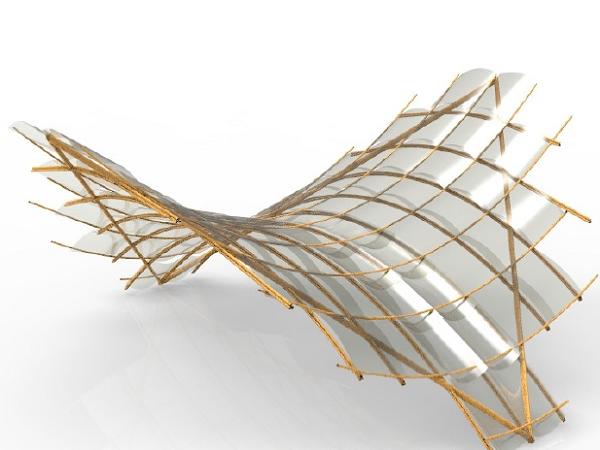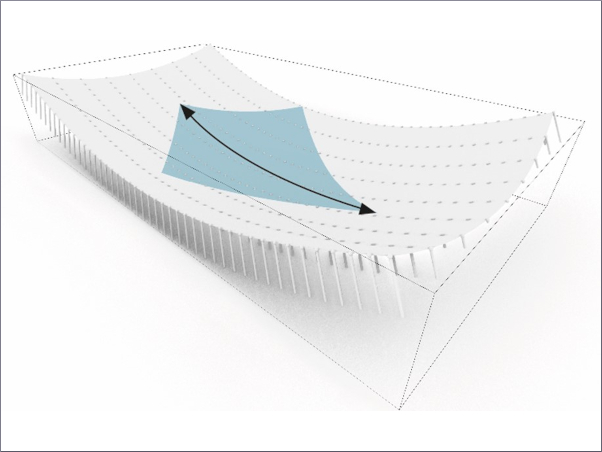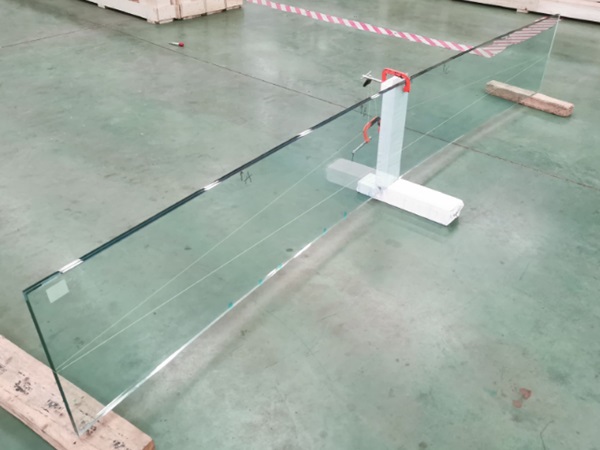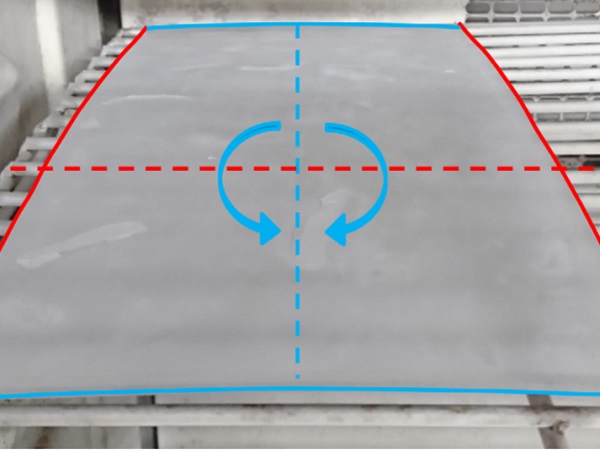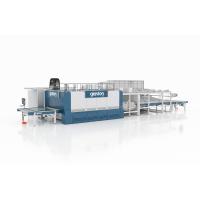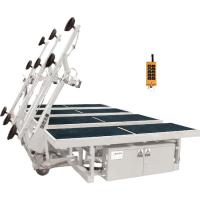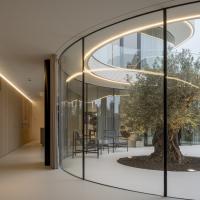MSc. BUILDING TECHNOLOGY, FACULTY OF ARCHITECTURE, URBANISM AND BUILDING SCIENCE
PRIYANKA GANATRA
SUPERVISORS:
Dr. Ir. CHRISTIAN LOUTER
Ir. FAIDRA OIKONOMOPOULOU
Ir. FRANK SCHNATER
BAMBOO GUIDANCE:
Dr. Ir. FRED VEER
INTRODUCTION
This research project is about studying the structural ability of two materials; bamboo and thin glass.
Bamboo is used as the main load bearing skeleton structure, whereas thin glass is used as a cladding material.
Bamboo has varying material properties. It is not a homogenous material and to predict its structural strength becomes difficult. Also because of the irregularities it becomes difficult to combine with other materials.
Bamboo is least engineered material. Integrating it with other materials can overcome drawbacks of bamboo. Hence the goal of the project is to explore the potential and possibilities of bamboo with thin glass.
ASPECT 1
The relationship between research and design.
For a bamboo and glass design to be completely viable, the research was divided into several stages. Firstly it was important to have a defined goal and objective.
The main objective of the graduation project was to investigate bamboo and thin glass and engineer both the material so that it behaves coherently.
To achieve this objective the parameters of the research were based on studying the properties of the material, looking at existing bamboo structures and connections, glass connection, methods of construction, form finding approach and finally learning how to calculate its structural strength.
Bamboo it is not a conventional material like steel or concrete. It is a strong, lightweight and flexible material. But it is a natural material with many irregularities and lacks consistency in terms of size and property.
Most designs out of bamboo were not permanent functional structures but temporary urban inserts like pavilions community center and other such semi-outdoor spaces.
That means they are occasionally used. Because of the hollow tubular shape of bamboo, it becomes difficult to connect. There are huge tolerances that occur on site when dealing with bamboo. As a result the connections has to be simple and developable on site. Mostly bamboo is connected using bolt and lashing systems.
So over the years the material has not been explored to its fullest potential. By combining with other materials, it is possible to develop bamboo structures that can fit into urban context like any other building.
The site selected is a warehouse in India. The roof of this building is replaced by bamboo and thin glass gridshell. The existing roof is made up of steel truss and aluminium panels are cladded over it.
The building has to be protected from rains and high radiations. Hence the proposed gridshell roof is only watertight and open from the sides to allow natural ventilation.

The gridshell is made up of pre-bent bamboo. In order to pre-bend bamboo, bending behaviour of the material is studied through experiments and finite element analysis. Bamboo is bent on site by laying out on a grid system and is done by experienced craftsmen.
However, architects designing the structure are not able to estimate till what extent the curvature of the bamboo will be approximated as per the design. This is because bending bamboo involves factors like creep, spring back deflection.
Part of the research is predicting the structural behaviour of bamboo and verifying it through experiments. Bending of thin glass is also analyzed and evaluated for its flexibility. Thin glass is used to match the tolerances when constructing with bamboo. Thus, the flexibility of one material counters the drawbacks of the other material.
ASPECT 2
The relationship between the theme of the graduation lab and the subject/case study chosen by the student within this framework (location/object).
The theme of the studio “sustainable design graduation studio” is categorized into facade design, climate design and structural design. This thesis research is oriented towards structural design. Structural design plays an important role in developing any design into a sustainable building.
It has helped me in optimizing the structure in terms of material selection, quantity of material depending on the forces the structure undergoes, number of joints and components needed. Apart from structural point of view, the materials selected for this project is natural causing no harm to the ecosystem.
Even glass is completely recyclable and by using thin glass the amount of material required reduces drastically compared to conventional soda lime glass. By using lightweight materials it becomes easy for transportation and assembling the structure, causing minimal effects on the environment.
ASPECT 3
The relationship between the methodical line of approach of the graduation lab and the method chosen by the student in this framework.
The outline for research framework of this studio was given and broadly classified into: determining goal and research question, literature review, conceptualization, selection of subjects or cases, survey or experimental design, implementation of results.
The research progressed in a linear way to some extent. Major part of my research revolved on making the roof design out of bamboo and glass feasible and durable. This means I followed the research by design methodology.
The feseability of the structure depended on how two materials come together. The challanges were approached by conducting experiments and also by talking to few people who are experts in bamboo construction. Figure 3, briefly explains the research process.


ASPECT 4
The relationship between the project and the wider social context
As mentioned before, a bamboo and glass structure was designed where it is functional everyday. In a factory or a warehouse, the employees are spending most of their time during the day.
The structure is designed keeping in mind the climatic conditions. Natural daylight and ventilation is obtained because of this cantilevered roof structure.
It is a pleasurable experience to have a lightweight warm-looking roof rather than a completely closed structure with only windows and doors.
By using natural material, the building is allowed to breathe. The issue of maintenance is also minimized because of this type of construction. Thin glass is cold bent on site.
This helps in re-configuring the panel without much effort, depending on the bamboo grid. This glass is not yet used in construction industry.
By proposing possibilities and advantages of this material in architecture industry, will lead to further exploration and development of this material.
Bamboo is generally associated as cheap or temporary construction material. Hence the project breaks the barriers and proves it to be a good choice for a construction material not only aesthetically but also functionally.
However the current roof design may seem to be complicated. And there can be many possibilities of the geometry which are simpler to build and plan (cylindrical dome, vault).
Depending on the end use and client’s needs, alternate form can be developed using the same technique of constructing glass and bamboo.


